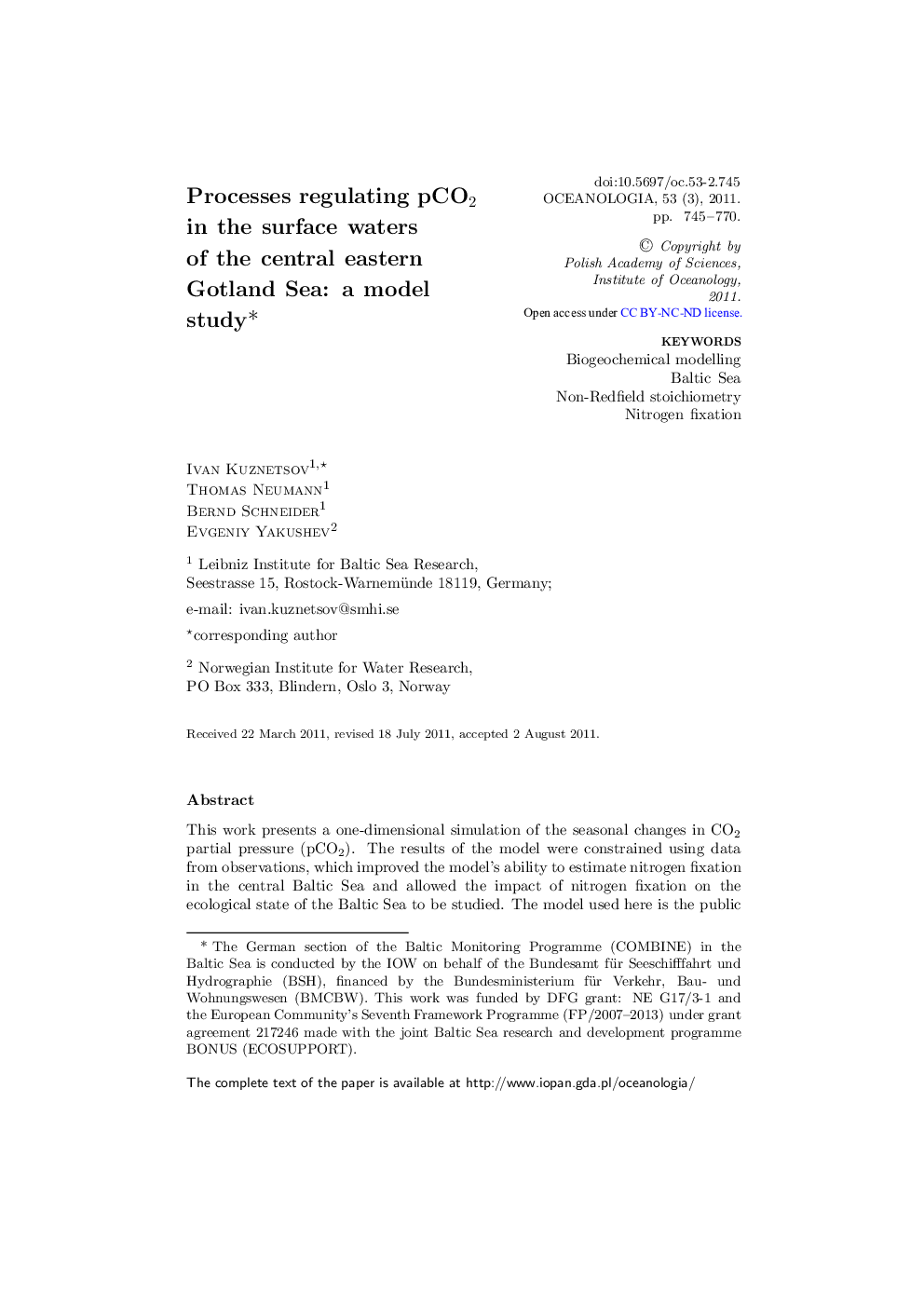| Article ID | Journal | Published Year | Pages | File Type |
|---|---|---|---|---|
| 2069972 | Oceanologia | 2011 | 26 Pages |
This work presents a one-dimensional simulation of the seasonal changes in CO2 partial pressure (pCO2). The results of the model were constrained using data from observations, which improved the model’s ability to estimate nitrogen fixation in the central Baltic Sea and allowed the impact of nitrogen fixation on the ecological state of the Baltic Sea to be studied. The model used here is the public domain water-column model GOTM (General Ocean Turbulence Model), which in this study was coupled with a modifed Baltic Sea ecosystem model, ERGOM (The Baltic Sea Research Institute’s ecosystem model). To estimate nitrogen fixation rates in the Gotland Sea, the ERGOM model was modified by including an additional cyanobacteria group able to fix nitrogen from March to June. Furthermore, the model was extended by a simple CO2 cycle. Variable C:P and N:P ratios, controlled by phosphate concentrations in ambient water, were used to represent cyanobacteria, detritus and sediment detritus. This approach improved the model’s ability to reproduce sea-surface phosphate and pCO2 dynamics. The resulting nitrogen fixation rates in 2005 for the two simulations, with and without the additional cyanobacteria group, were 259 and 278 mmol N m−2 year−1 respectively.
